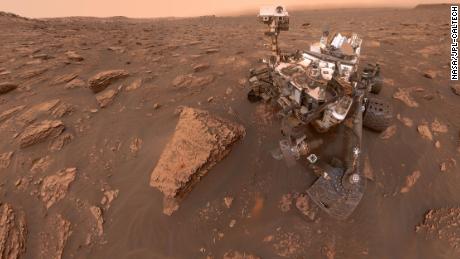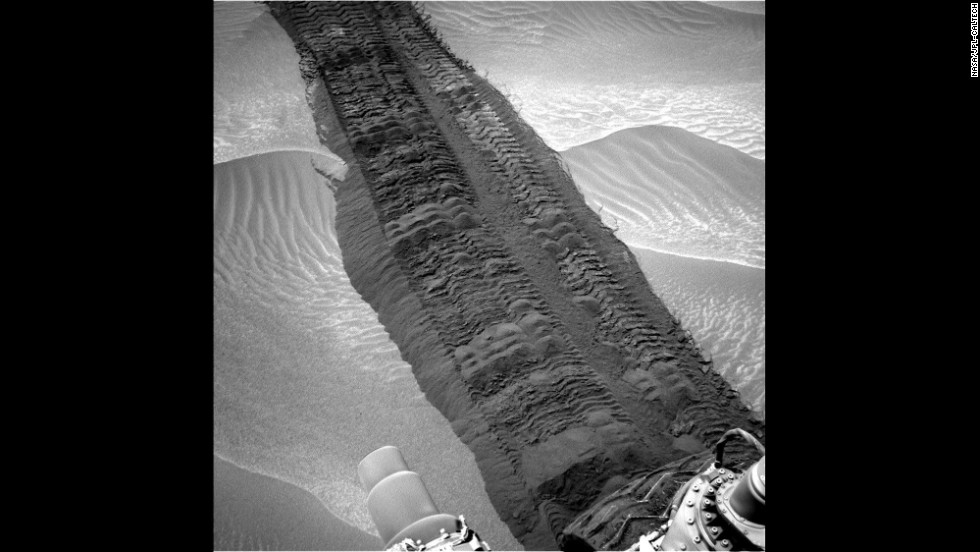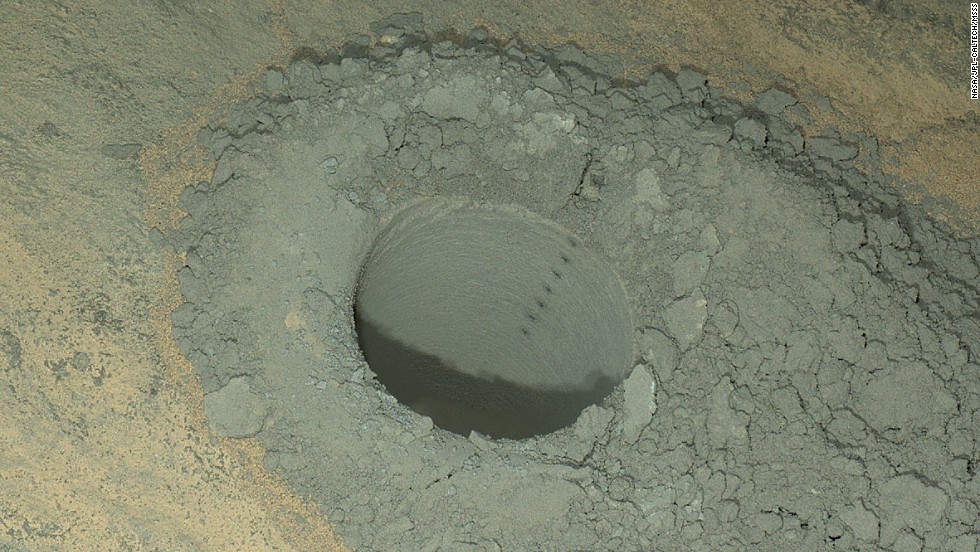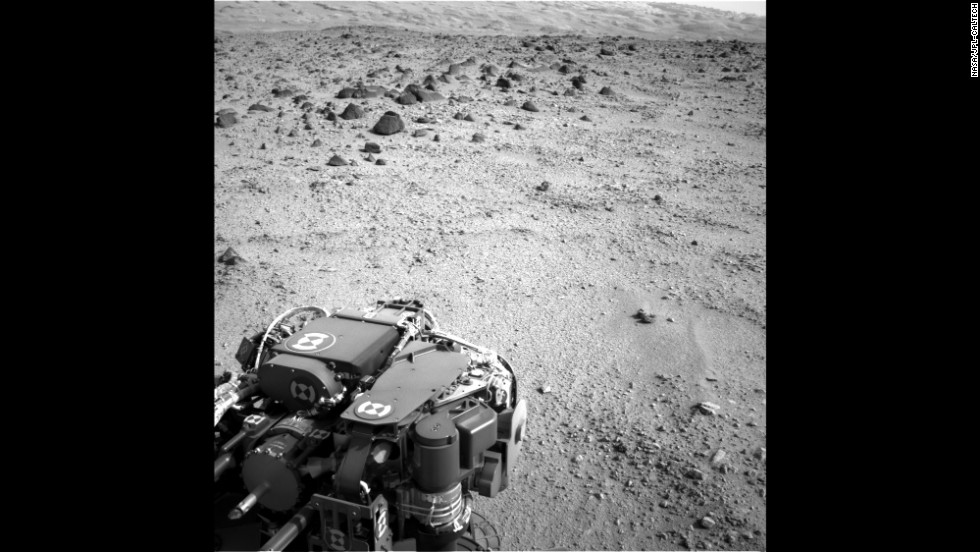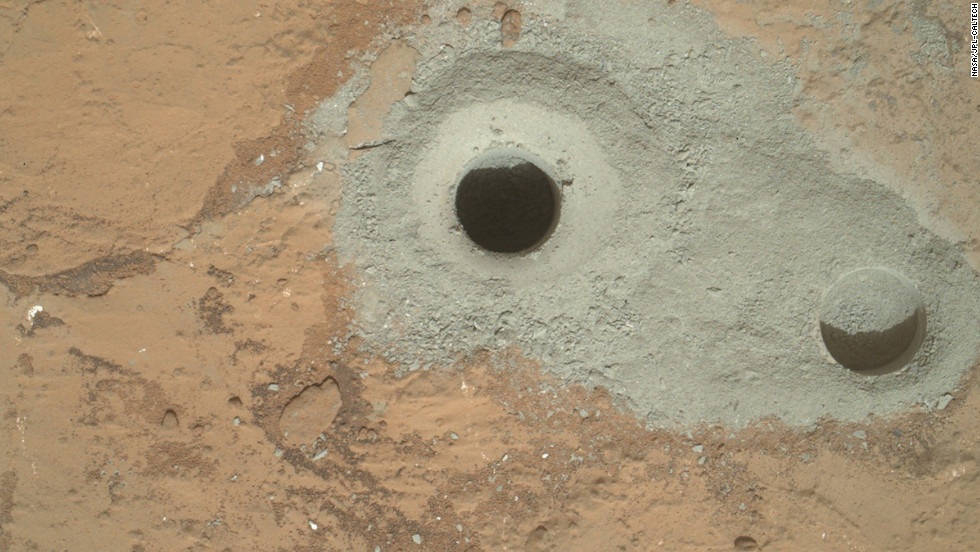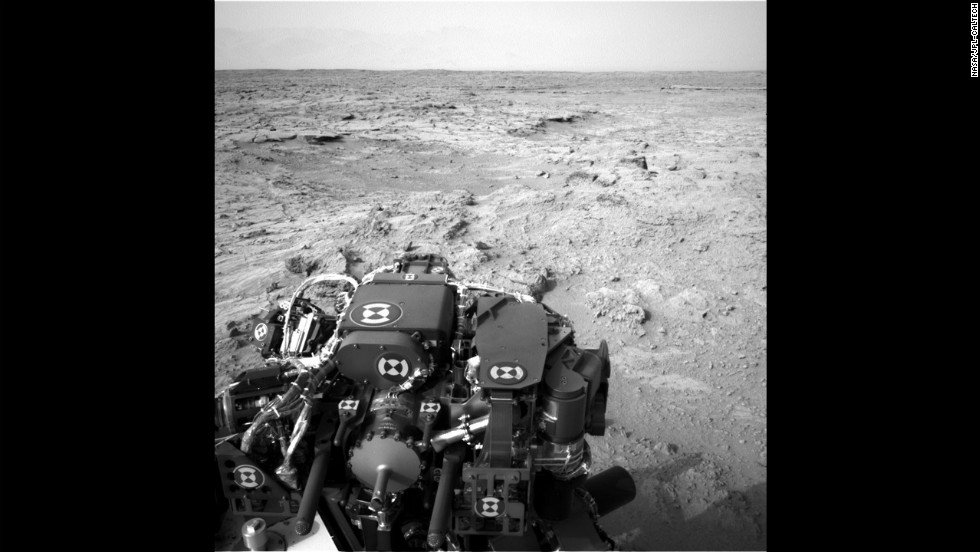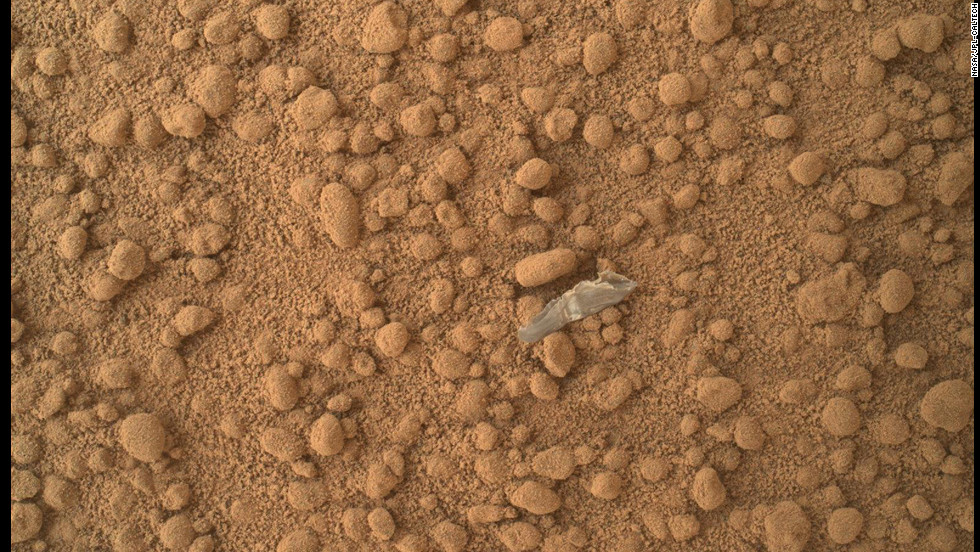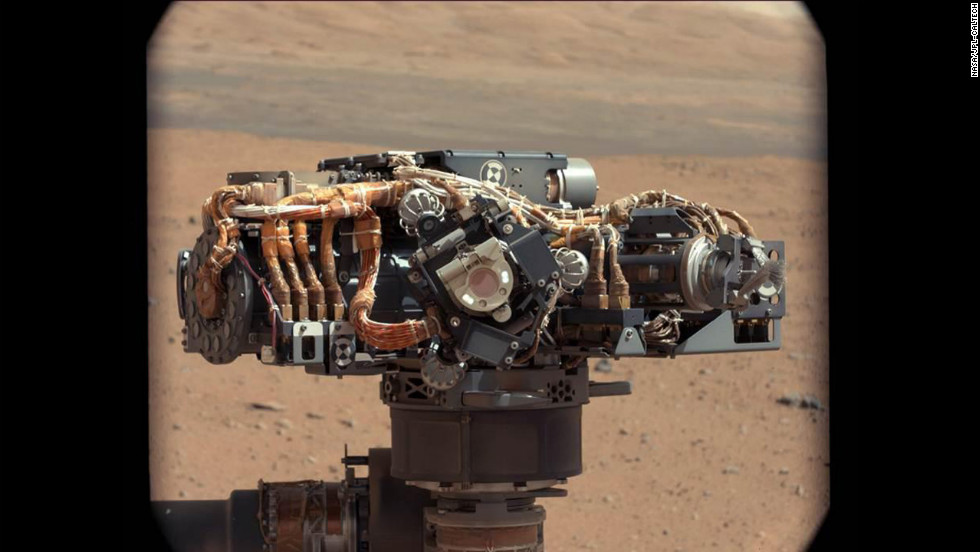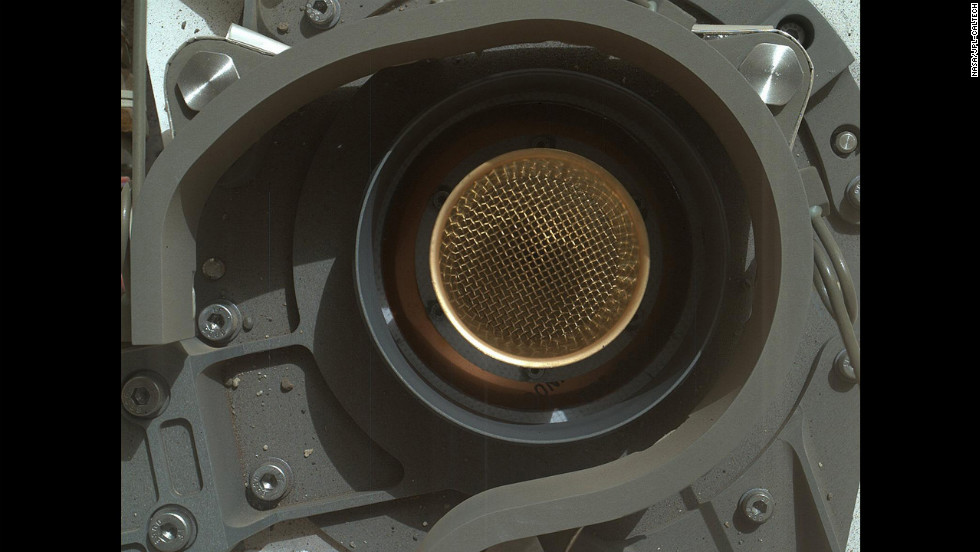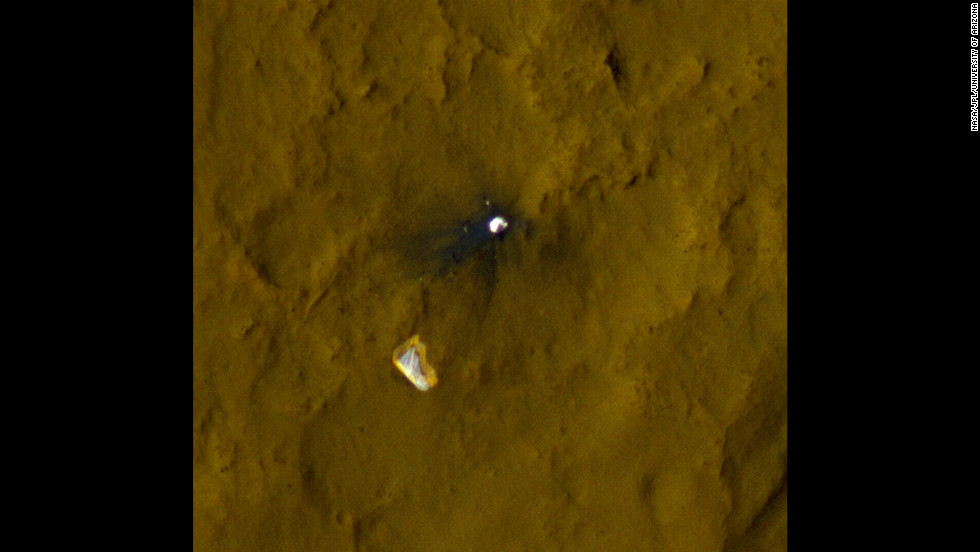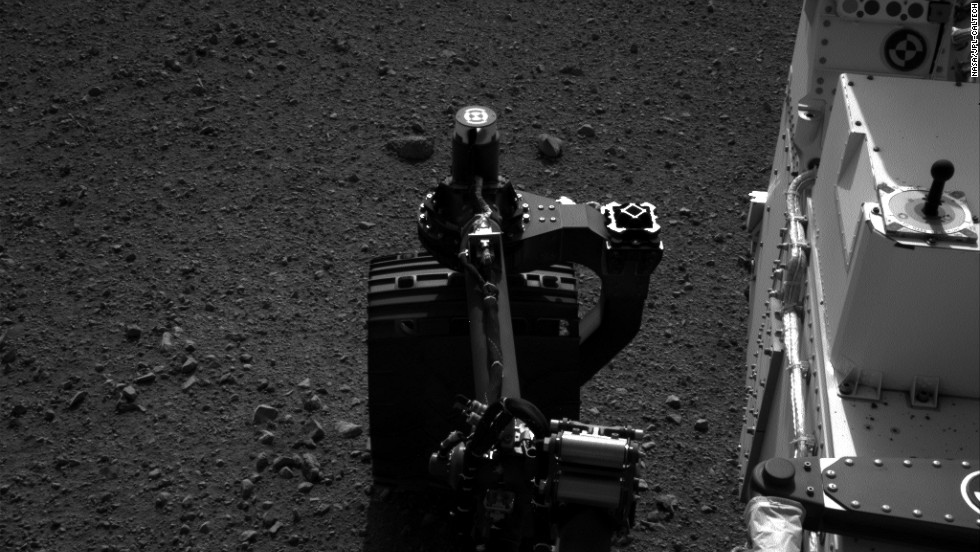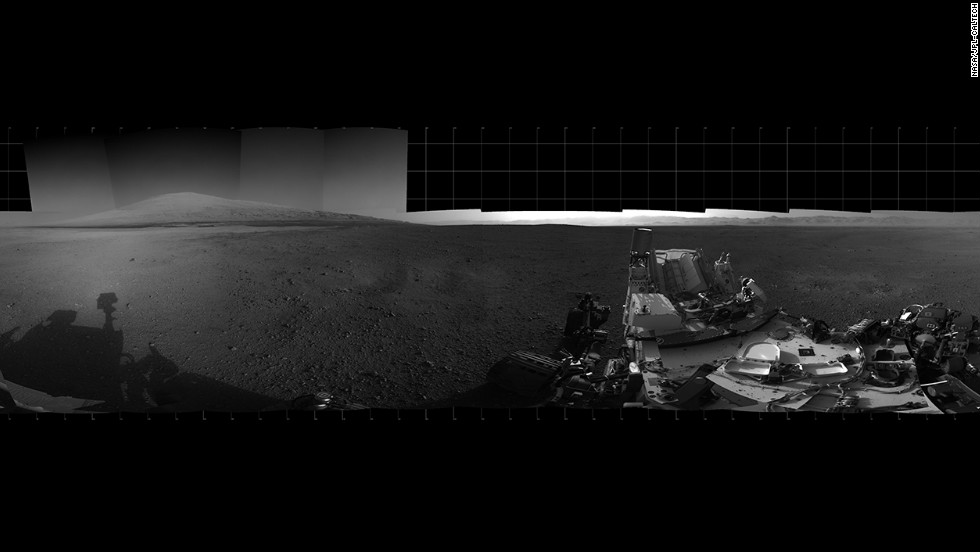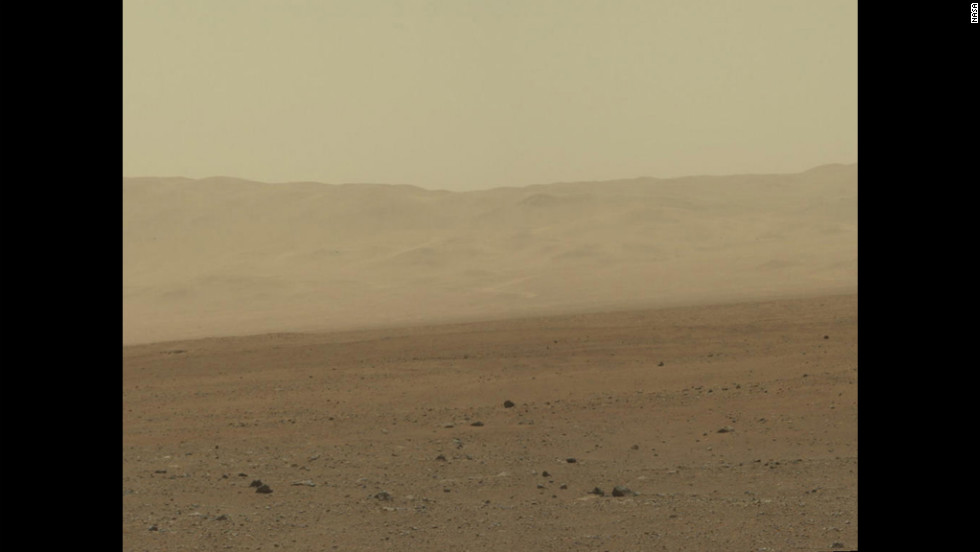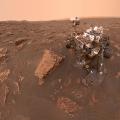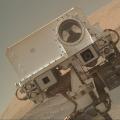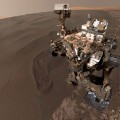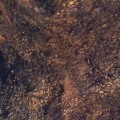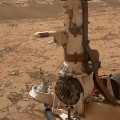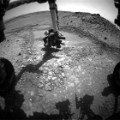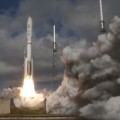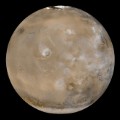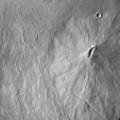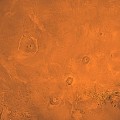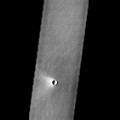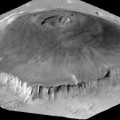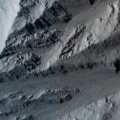NASA's Mars Curiosity Rover
A self-portrait taken by NASA's Curiosity rover on June 15, 2018. A Martian dust storm has reduced sunlight and visibility around the planet, including at the rover's location in Gale Crater.
NASA's Mars Curiosity Rover
NASA's Mars Curiosity Rover tweeted out a new image on January 23, 2018: "I'm back! Did you miss me?" The selfie is part of a fresh batch of images the rover beamed back from Mars.
NASA's Mars Curiosity Rover
Five years ago and 154 million miles away, NASA's Curiosity Mars rover successfully landed on the planet. Take a look back at what the rover has been up to these past five years, including this selfie it took on January 19, 2016.
NASA's Mars Curiosity Rover
The bright blue speck in the middle of this image is NASA's Curiosity Mars rover. The image was taken from another NASA spacecraft, Mars Reconnaissance Orbiter, which is in orbit above the planet, on June 6, 2017.
NASA's Mars Curiosity Rover
NASA's Mars Curiosity Rover
The Mars rover Curiosity does a test drill on a rock dubbed "Bonanza King" to determine whether it would be a good place to dig deeper and take a sample. But after the rock shifted, the test was stopped.
NASA's Mars Curiosity Rover
Wheel tracks from Curiosity are seen on the sandy floor of a lowland area dubbed "Hidden Valley" in this image.
NASA's Mars Curiosity Rover
The rover recently encountered this iron meteorite, which NASA named "Lebanon." This find is similar in shape and luster to iron meteorites found on Mars by the previous generation of rovers. A portion of the rock was outlined by NASA scientists.
NASA's Mars Curiosity Rover
Curiosity took this nighttime photo of a hole it drilled May 5 to collect soil samples. NASA said this image combines eight exposures taken after dark on May 13.
NASA's Mars Curiosity Rover
This view of the twilight sky and Martian horizon, taken by Curiosity, includes Earth as the brightest point of light in the night sky. Earth is a little left of center in the image, and our moon is just below Earth. A human observer with normal vision, if standing on Mars, could easily see Earth and the moon as two distinct, bright "evening stars."
NASA's Mars Curiosity Rover
The lower slopes of "Mount Sharp" are visible at the top of this image, taken on July 9, 2013. The turret of tools at the end of the rover's arm, including the rock-sampling drill in the lower left corner, can also be seen.
NASA's Mars Curiosity Rover
The rock on the left, called "Wopmay," was discovered by the rover Opportunity, which arrived in 2004 on a different part of Mars. Iron-bearing sulfates indicate that this rock was once in acidic waters. On the right are rocks from "Yellowknife Bay," where rover Curiosity was situated. These rocks are suggestive of water with a neutral pH, which is hospitable to life formation.
NASA's Mars Curiosity Rover
Curiosity shows the first sample of powdered rock extracted by the rover's drill. The image was taken by Curiosity's mast camera on February 20, 2013.
NASA's Mars Curiosity Rover
The rover drilled this hole, in a rock that's part of a flat outcrop researchers named "John Klein," during its first sample drilling on February 8, 2013.
NASA's Mars Curiosity Rover
Curiosity's first set of nighttime photos include this image of Martian rock illuminated by ultraviolet lights. Curiosity used the camera on its robotic arm, the Mars Hand Lens Imager, to capture the images on January 22, 2013.
NASA's Mars Curiosity Rover
A view of what NASA describes as "veined, flat-lying rock." It was selected as the first drilling site for the Mars rover.
NASA's Mars Curiosity Rover
Curiosity used a dust-removal tool for the first time to clean this patch of rock on the Martian surface on January 6, 2013.
NASA's Mars Curiosity Rover
The Mars rover Curiosity recorded this view from its left navigation camera after an 83-foot eastward drive on November 18, 2012. The view is toward "Yellowknife Bay" in the "Glenelg" area of Gale Crater.
NASA's Mars Curiosity Rover
Three "bite marks" made by the rover's scoop can be seen in the soil on Mars surface on October 15, 2012.
NASA's Mars Curiosity Rover
The robotic arm on NASA's Mars rover Curiosity delivered a sample of Martian soil to the rover's observation tray for the first time on October 16, 2012.
NASA's Mars Curiosity Rover
This image shows what the rover team has determined to be a piece of debris from the spacecraft, possibly shed during the landing.
NASA's Mars Curiosity Rover
The rover's scoop contains larger soil particles that were too big to filter through a sample-processing sieve. After a full-scoop sample had been vibrated over the sieve, this portion was returned to the scoop for inspection by the rover's mast camera.
NASA's Mars Curiosity Rover
Curiosity cut a wheel scuff mark into a wind-formed ripple at the "Rocknest" site on October 3, 2012. This gave researchers a better opportunity to examine the particle-size distribution of the material forming the ripple.
NASA's Mars Curiosity Rover
NASA's Curiosity rover found evidence for what scientists believe was an ancient, flowing stream on Mars at a few sites, including the rock outcrop pictured here. The key evidence for the ancient stream comes from the size and rounded shape of the gravel in and around the bedrock, according to the Jet Propulsion Laboratory/Caltech science team. The rounded shape leads the science team to conclude they were transported by a vigorous flow of water. The grains are too large to have been moved by wind.
NASA's Mars Curiosity Rover
Curiosity completed its longest drive to date on September 26, 2012. The rover moved about 160 feet east toward the area known as "Glenelg." As of that day the rover had moved about a quarter-mile from its landing site.
NASA's Mars Curiosity Rover
This image shows the robotic arm of NASA's Mars rover Curiosity with the first rock touched by an instrument on the arm. The photo was taken by the rover's right navigation camera.
NASA's Mars Curiosity Rover
Researchers used the Curiosity rover's mast camera to take a photo of the Alpha Particle X-Ray Spectrometer. The image was used to see whether it had been caked in dust during the landing.
NASA's Mars Curiosity Rover
Researchers also used the mast camera to examine the Mars Hand Lens Imager on the rover to inspect its dust cover and check that its LED lights were functional. In this image, taken on September 7, 2012, the imager is in the center of the screen with its LED on. The main purpose of Curiosity's imager camera is to acquire close-up, high-resolution views of rocks and soil from the Martian surface.
NASA's Mars Curiosity Rover
This is the open inlet where powdered rock and soil samples will be funneled down for analysis. The image is made up of eight photos taken on September 11, 2012, by the imager and is used to check that the instrument is operating correctly.
NASA's Mars Curiosity Rover
This is the calibration target for the imager. This image, taken on September 9, 2012, shows that the surface of the calibration target is covered with a layor of dust as a result of the landing. The calibration target includes color references, a metric bar graphic, a penny for scale comparison, and a stair-step pattern for depth calibration.
NASA's Mars Curiosity Rover
This view of the three left wheels of NASA's Mars rover Curiosity combines two images that were taken by the rover's Mars Hand Lens Imager on September 9, 2012, the 34th day of Curiosity's work on Mars. In the distance is the lower slope of "Mount Sharp."
NASA's Mars Curiosity Rover
The penny in this image is part of a camera calibration target on NASA's Mars rover Curiosity. The image was taken by the Mars Hand Lens Imager camera.
NASA's Mars Curiosity Rover
The rover captured this mosiac of a rock feature called 'Snake River" on December 20, 2012.
NASA's Mars Curiosity Rover
The left eye of the Mast Camera on NASA's Mars rover Curiosity took this image of the rover's arm on September 5, 2012.
NASA's Mars Curiosity Rover
Sub-image one of three shows the rover and its tracks after a few short drives. Tracking the tracks will provide information on how the surface changes as dust is deposited and eroded.
NASA's Mars Curiosity Rover
Sub-image two shows the parachute and backshell, now in color. The outer band of the parachute has a reddish color.
NASA's Mars Curiosity Rover
Sub-image three shows the descent stage crash site, now in color, and several distant spots (blue in enhanced color) downrange that are probably the result of distant secondary impacts that disturbed the surface dust.
NASA's Mars Curiosity Rover
An image released August 27, 2012, was taken with Curiosity rover's 100-millimeter mast camera, NASA says. The image shows "Mount Sharp" on the Martian surface. NASA says the rover will go to this area.
NASA's Mars Curiosity Rover
The Mars rover Curiosity moved about 15 feet forward and then reversed about 8 feet during its first test drive on August 22, 2012. The rover's tracks can be seen in the right portion of this panorama taken by the rover's navigation camera.
NASA's Mars Curiosity Rover
NASA tested the steering on its Mars rover Curiosity on August 21, 2012. Drivers wiggled the wheels in place at the landing site on Mars.
NASA's Mars Curiosity Rover
Curiosity moved its robot arm on August 20, 2012, for the first time since it landed on Mars. "It worked just as we planned," said JPL engineer Louise Jandura in a NASA press release. This picture shows the 7-foot-long arm holding a camera, a drill, a spectrometer, a scoop and other tools. The arm will undergo weeks of tests before it starts digging.
NASA's Mars Curiosity Rover
With the addition of four high-resolution Navigation Camera, or Navcam, images, taken on August 18, 2012. Curiosity's 360-degree landing-site panorama now includes the highest point on "Mount Sharp" visible from the rover. Mount Sharp's peak is obscured from the rover's landing site by this highest visible point.
NASA's Mars Curiosity Rover
This composite image, with magnified insets, depicts the first laser test by the Chemistry and Camera, or ChemCam, instrument aboard NASA's Curiosity Mars rover. The composite incorporates a Navigation Camera image taken prior to the test, with insets taken by the camera in ChemCam. The circular insert highlights the rock before the laser test. The square inset is further magnified and processed to show the difference between images taken before and after the laser interrogation of the rock.
NASA's Mars Curiosity Rover
An updated self-portrait of the Mars rover Curiosity, showing more of the rover's deck. This image is a mosiac compiled from images taken from the navigation camera. The wall of "Gale Crater," the rover's landing site, can be seen at the top of the image.
NASA's Mars Curiosity Rover
This image shows what will be the rover's first target with it's chemistry and camera (ChemCam) instrument. The ChemCam will fire a laser at the rock, indicated by the black circle. The laser will cause the rock to emit plasma, a glowing, ionized gas. The rover will then analyze the plasma to determine the chemical composition of the rock.
NASA's Mars Curiosity Rover
This image, with a portion of the rover in the corner, shows the wall of "Gale Crater" running across the horizon at the top of the image.
NASA's Mars Curiosity Rover
This image, taken from the rover's mast camera, looks south of the landing site toward "Mount Sharp."
NASA's Mars Curiosity Rover
In this portion of the larger mosaic from the previous frame, the crater wall can be seen north of the landing site, or behind the rover. NASA says water erosion is believed to have created a network of valleys, which enter "Gale Crater" from the outside here.
NASA's Mars Curiosity Rover
In this portion of the larger mosaic from the previous frame, the crater wall can be seen north of the landing site, or behind the rover. NASA says water erosion is believed to have created a network of valleys, which enter "Gale Crater" from the outside here.
NASA's Mars Curiosity Rover
Two blast marks from the descent stage's rockets can be seen in the center of this image. Also seen is Curiosity's left side. This picture is a mosaic of images taken by the rover's navigation cameras.
NASA's Mars Curiosity Rover
This color full-resolution image showing the heat shield of NASA's Curiosity rover was obtained during descent to the surface of Mars on August 13, 2012. The image was obtained by the Mars Descent Imager instrument known as MARDI and shows the 15-foot diameter heat shield when it was about 50 feet from the spacecraft.
NASA's Mars Curiosity Rover
This first image taken by the Navigation cameras on Curiosity shows the rover's shadow on the surface of Mars.
NASA's Mars Curiosity Rover
This image comparison shows a view through a Hazard-Avoidance camera on NASA's Curiosity rover before and after the clear dust cover was removed. Both images were taken by a camera at the front of the rover. "Mount Sharp," the mission's ultimate destination, looms ahead.
NASA's Mars Curiosity Rover
The four main pieces of hardware that arrived on Mars with NASA's Curiosity rover were spotted by NASA's Mars Reconnaissance Orbiter. The High-Resolution Imaging Science Experiment camera captured this image about 24 hours after landing.
NASA's Mars Curiosity Rover
This view of the landscape to the north of NASA's Mars rover Curiosity was acquired by the Mars Hand Lens Imager on the first day after landing.
NASA's Mars Curiosity Rover
This is one of the first pictures taken by Curiosity after it landed. It shows the rover's shadow on the Martian soil.
NASA's Mars Curiosity Rover
This image shows Curiosity's main science target, "Mount Sharp." The rover's shadow can be seen in the foreground. The dark bands in the distances are dunes.
NASA's Mars Curiosity Rover
NASA's Curiosity rover was launched from Cape Canaveral Air Force Station in Florida on November 26, 2011. NASA's Mars Curiosity Rover, touched down on the planet on August 6, 2012.
